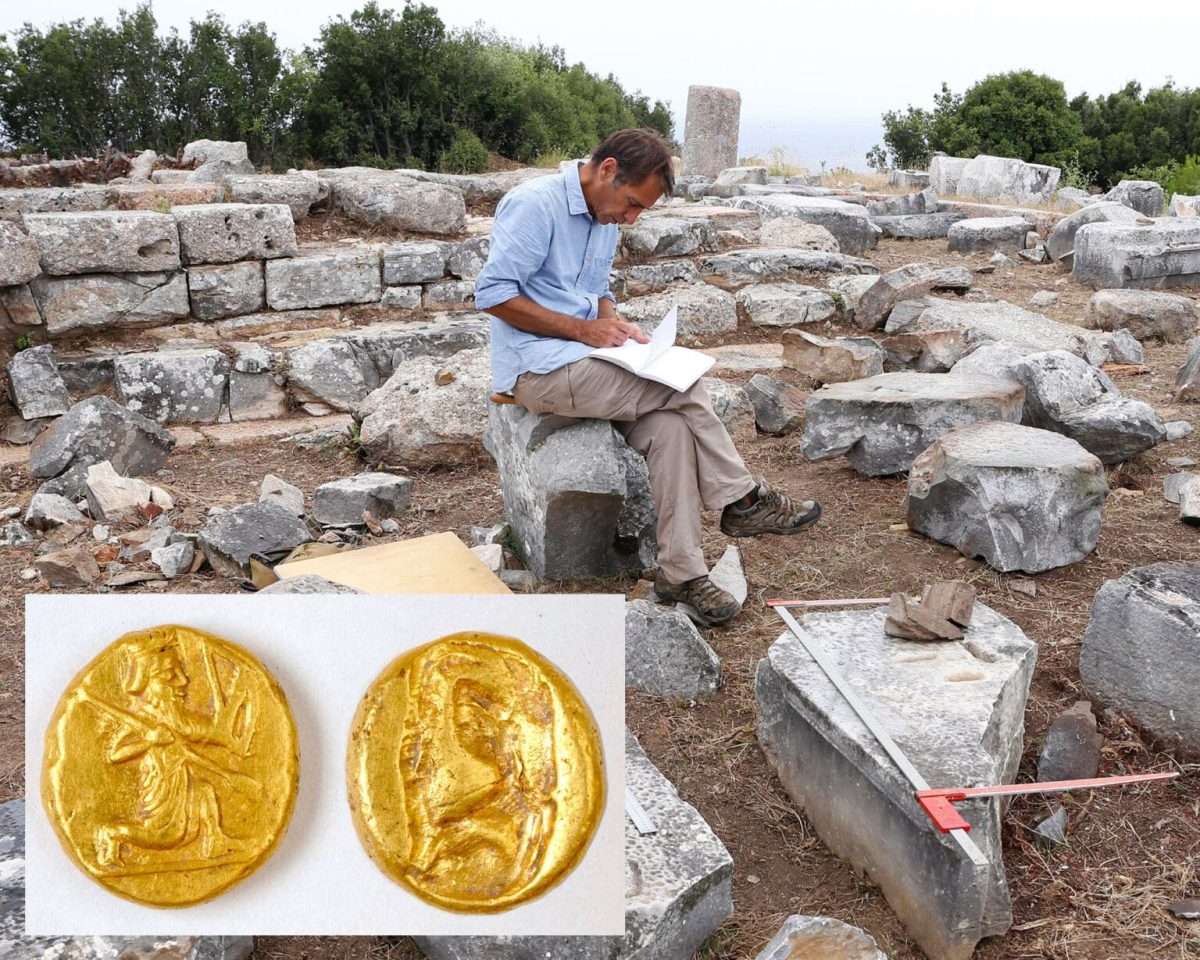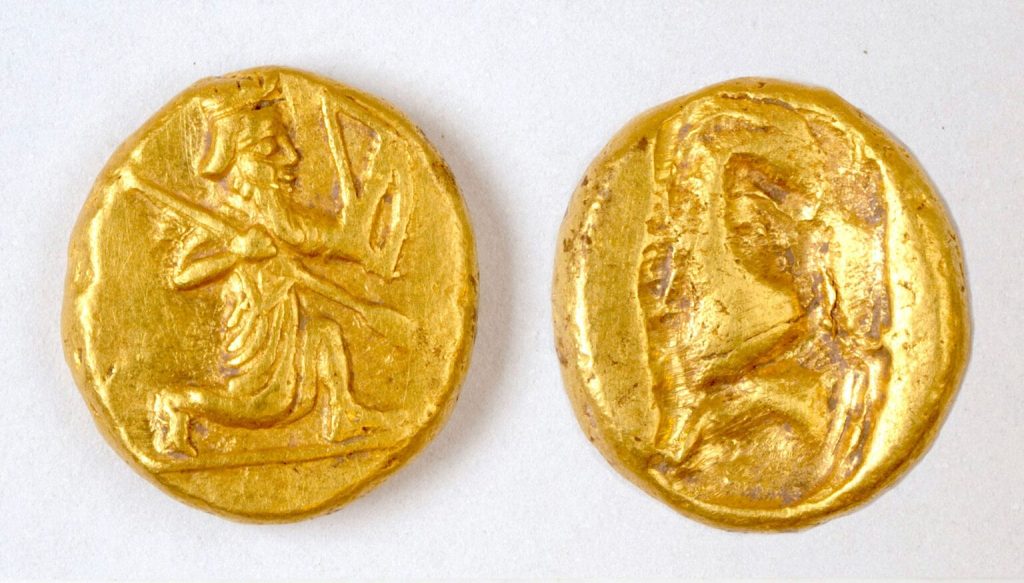
A pot of ancient Persian gold coins unearthed in the ancient city of Notion
A pot of ancient Persian gold coins was unearthed in the ancient city of Notion, an important port city in Antiquity.
Excavations at the ancient city of Notion in the Menderes district of Izmir province in western Türkiye, which first began in 1921, were resumed in 2022 by a team from the University of Michigan, Sinop University and the Turkish Ministry of Culture and Tourism.
Archaeologists from the University of Michigan have unearthed a pot of ancient Persian gold coins in the ancient city of Notion.
An ancient hoard of Persian coins offers insights into the political landscape around the time of the Peloponnesian War. This trove of coins is believed to have been buried around 2,400 years ago.
University of Michigan archaeologist Christopher Ratté and his research team discovered the bullion coins purely by chance “The coins were buried in a corner of the older building,” Dr. Ratté told the New York Times. “We weren’t actually looking for a pot of gold.”
Christopher Ratté, a professor of classical studies at the University of Michigan and director of the Notion Archaeological Project, “The discovery of such a valuable find in a controlled archaeological excavation is very rare. No one ever buries a hoard of coins, especially precious metal coins, without intending to retrieve it. So only the gravest misfortune can explain the preservation of such a treasure,” said.
The researchers first uncovered a small clay jug called an olpe, and hidden inside the olpe were dozens of gold coins known as daric. They feature the figure of a kneeling archer, a design element used for the Persian daric, a gold coin issued by the Persian Empire. The currency was likely minted in Sardis, located 60 miles northeast of Notion, according to a statement from the University of Michigan. The daric’s design remained consistent from the late sixth century BCE until the conquest of the Persian Empire by Alexander the Great in 330 BCE.
In the fifth century B.C., darics were mainly used to pay soldiers and mercenaries, with one daric equal to a month’s salary, so Ratté speculated that one such soldier may have buried his life savings, representing years of pay, in the jug before being killed in battle.
The burial of the coins coincides with a time of great military and political upheaval. Notion was occupied by a group of mercenaries and Persian sympathizers between 430 and 427 BCE. The killing of pro-Persian mercenaries by the Athenian general Paches during this period resulted in the expulsion of Persian sympathizers and the reconstruction of the city under Athenian rule. This series of incidents may explain why the treasure was buried and never found. Notion, situated in a contested frontier zone, frequently shifted between Persian and Greek control.

Ratté noted that most hoards of darics have been found by looters, who lack concern for historical context. “An archaeological find without contextual information is like a person suffering from amnesia—a person without memories. It is still interesting and important, but the loss of knowledge is incalculable,” he said.
University of Oxford archaeologist Andrew Meadows, who was not involved in the dig, said he was not aware of any other gold coin stash of this type ever being discovered in Asia Minor. “This is a find of the highest importance,” Meadows said. “The archaeological context for the hoard will help us fine-tune the chronology of Achaemenid gold coinage.”
The coins are currently housed at the Ephesus Archaeological Museum in Selcuk, Türkiye, along with other artifacts recovered from the site.
After the death of Alexander the Great, a political union was formed between Notion and Kolophon with a common citizenship agreement. Nation, which developed in the shadow of Kolophon, increased its importance more after the collapse of Kolophon and became an independent city.
Later on, this region fell within the borders of the Roman Empire. The city showed a great development especially during the reign of Hadrian and important structures such as the temple of Athena Polias were built.
The city of Nation continued to be an important center during the Byzantine period and became an episcopal center.
Cover Photo: Notion Archaeological Project, University of Michigan
You may also like
- A 1700-year-old statue of Pan unearthed during the excavations at Polyeuktos in İstanbul
- The granary was found in the ancient city of Sebaste, founded by the first Roman emperor Augustus
- Donalar Kale Kapı Rock Tomb or Donalar Rock Tomb
- Theater emerges as works continue in ancient city of Perinthos
- Urartian King Argishti’s bronze shield revealed the name of an unknown country
- The religious center of Lycia, the ancient city of Letoon
- Who were the Luwians?
- A new study brings a fresh perspective on the Anatolian origin of the Indo-European languages
- Perhaps the oldest thermal treatment center in the world, which has been in continuous use for 2000 years -Basilica Therma Roman Bath or King’s Daughter-
- The largest synagogue of the ancient world, located in the ancient city of Sardis, is being restored











Leave a Reply